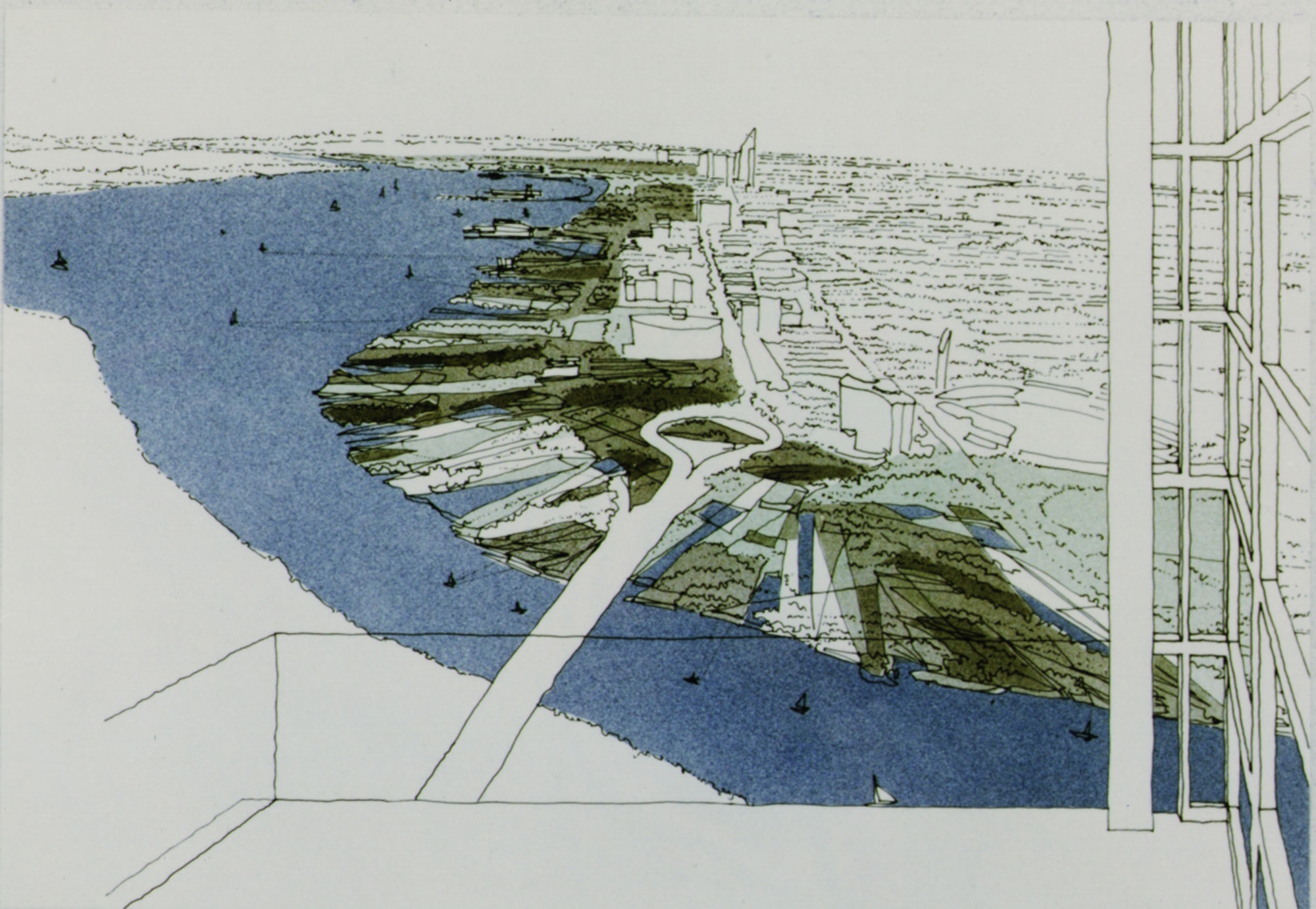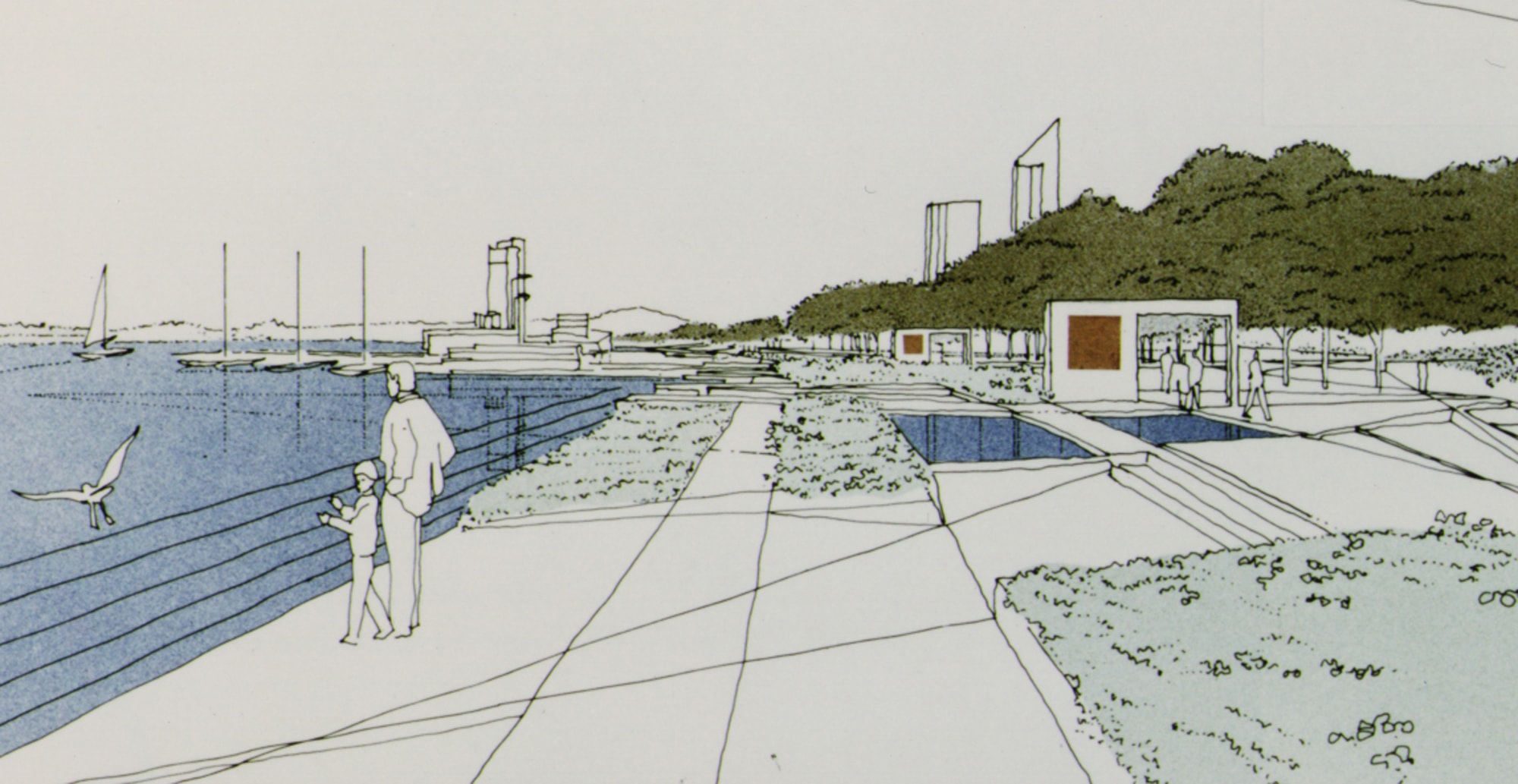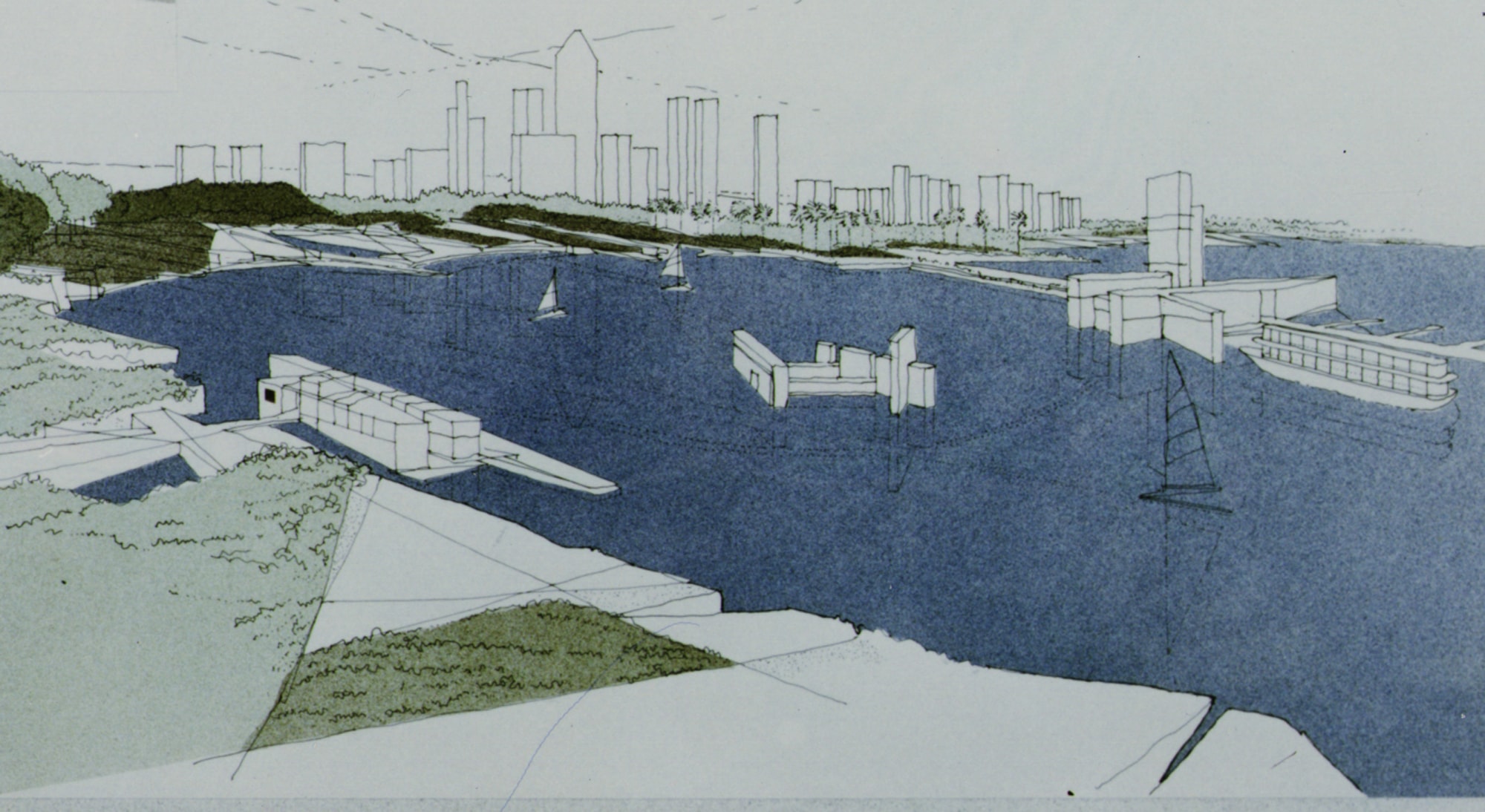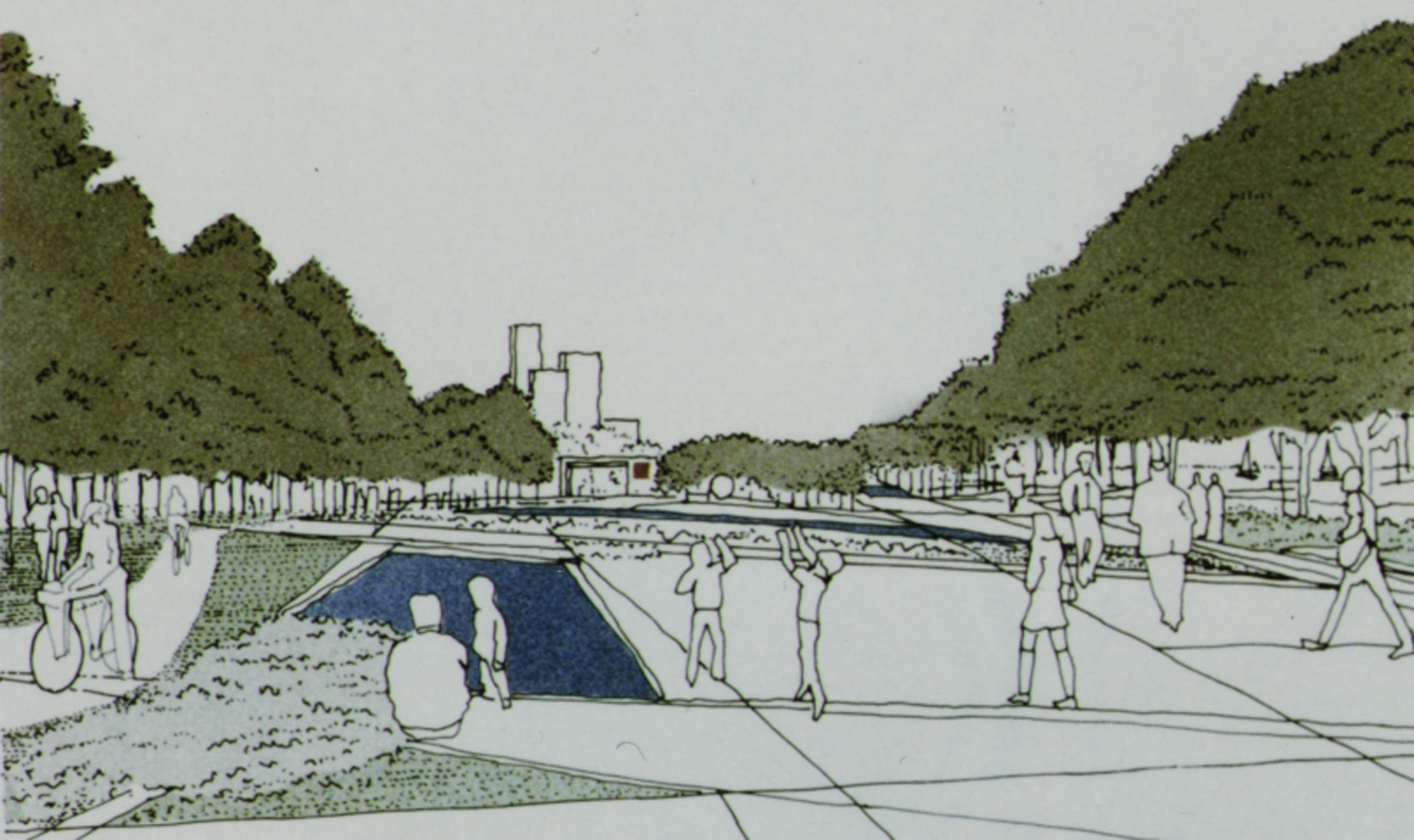perth world park
perth, Australia
Competition Proposal
Competition Date:
1992 (Unbuilt)
“Picturing others and everything which brings you closer to them is futile from the instant that communication can make their presence immediate.”
Jean Baudrillard The Ecstasy of Communication
During the night of February 20, 1962, John Glenn, orbiting the earth in the spaceship Friendship 7, described the lights of Perth to be clear and visible; thus, Perth became the first city to be recognized from space and connected to a world wide network of instantaneous communication.
The concept of World Park is to bring Perth to the world and the world to Perth. The design process overlays traces of telecommunication waves along the landfilled area bounded by the city and the Swan River. The registration of the resulting images is the organizational device that defines the landscape elements of this public park. The orbital path of Friendship 7 is delineated by a line of lights arrayed in an axial relationship from Mt. Eliza to Heirisson Island. The city grid was conceptually extended across the river, thus connecting the land and the water. Architectural elements are placed at the intersection of this extension and Friendship 7′s orbital path. Coupled with the native Australian belief that the land is paper thin or merely floating on the water, this process allowed for the manipulation of the landscape through the removal or voiding of specific zones. Consequently, the water is exposed, and the nature of the landfill is revealed.
To further reinforce the concept of World Park, a number of real time monitors are situated throughout the park. These monitors would be linked to live broadcast images of other cities around the world in real time. These objects of technology become focal points analogous to the fountain/statue of more traditional public spaces. World Park and Perth become a major node in a global communication network connected via electromagnetic waves.








